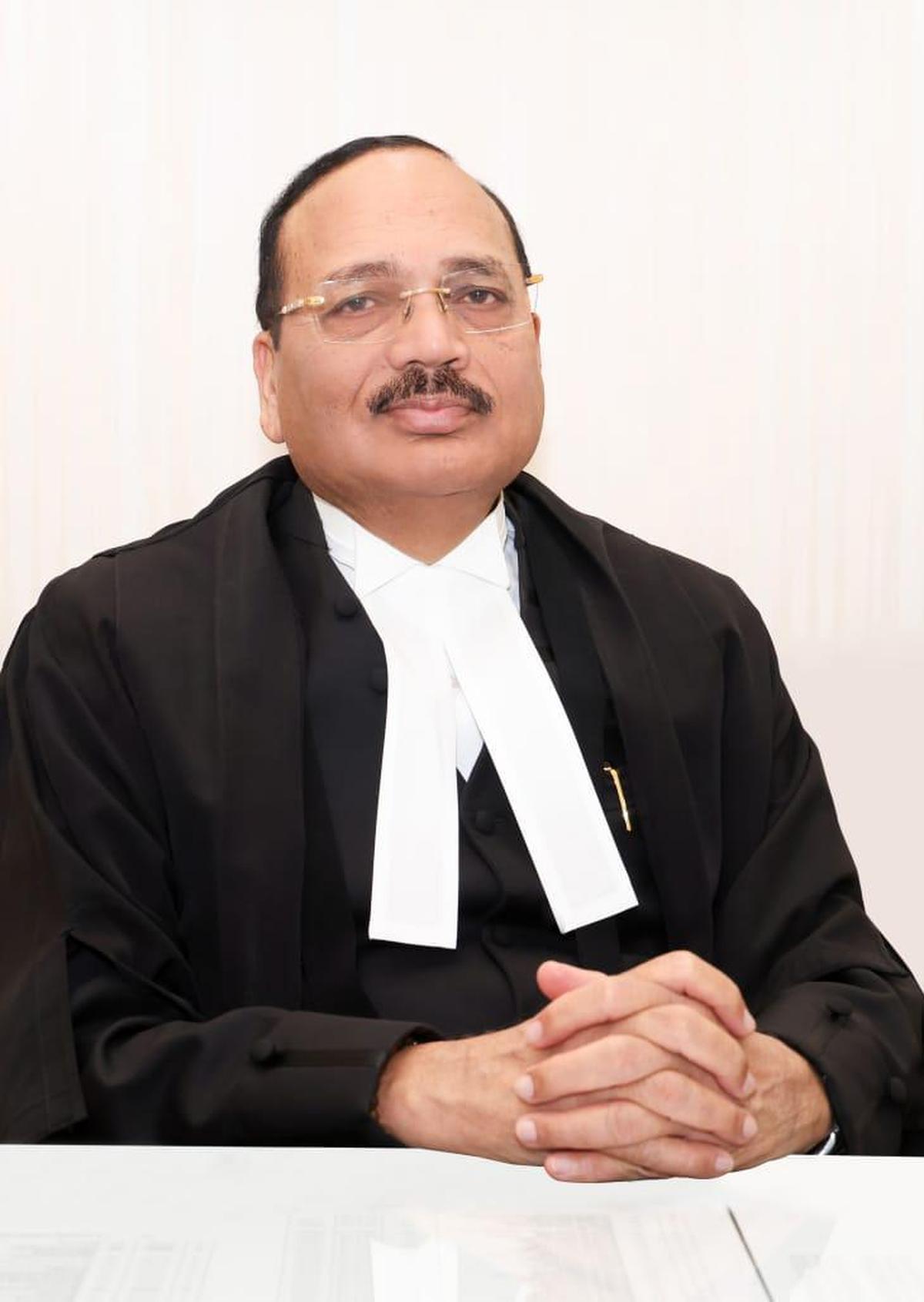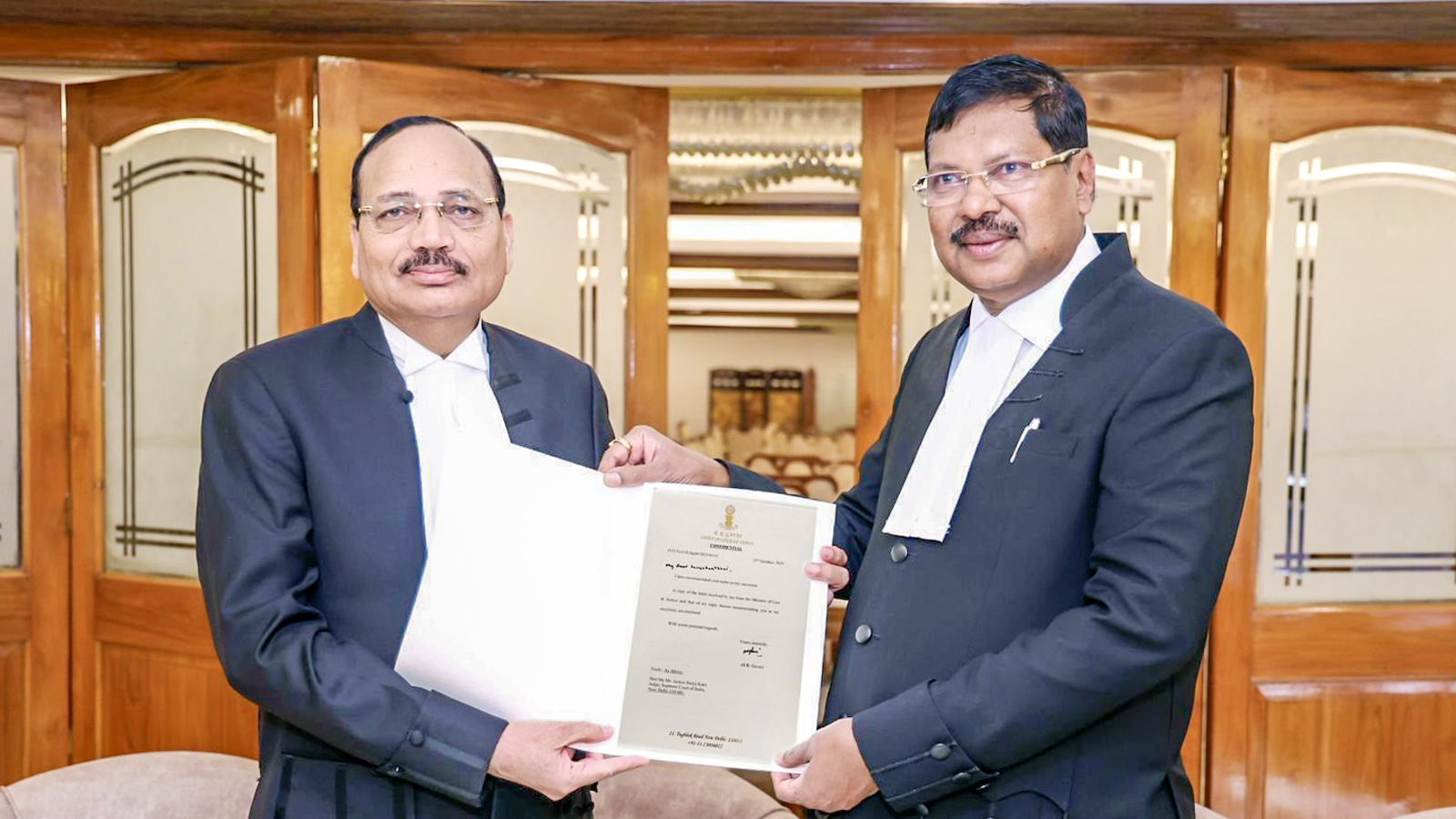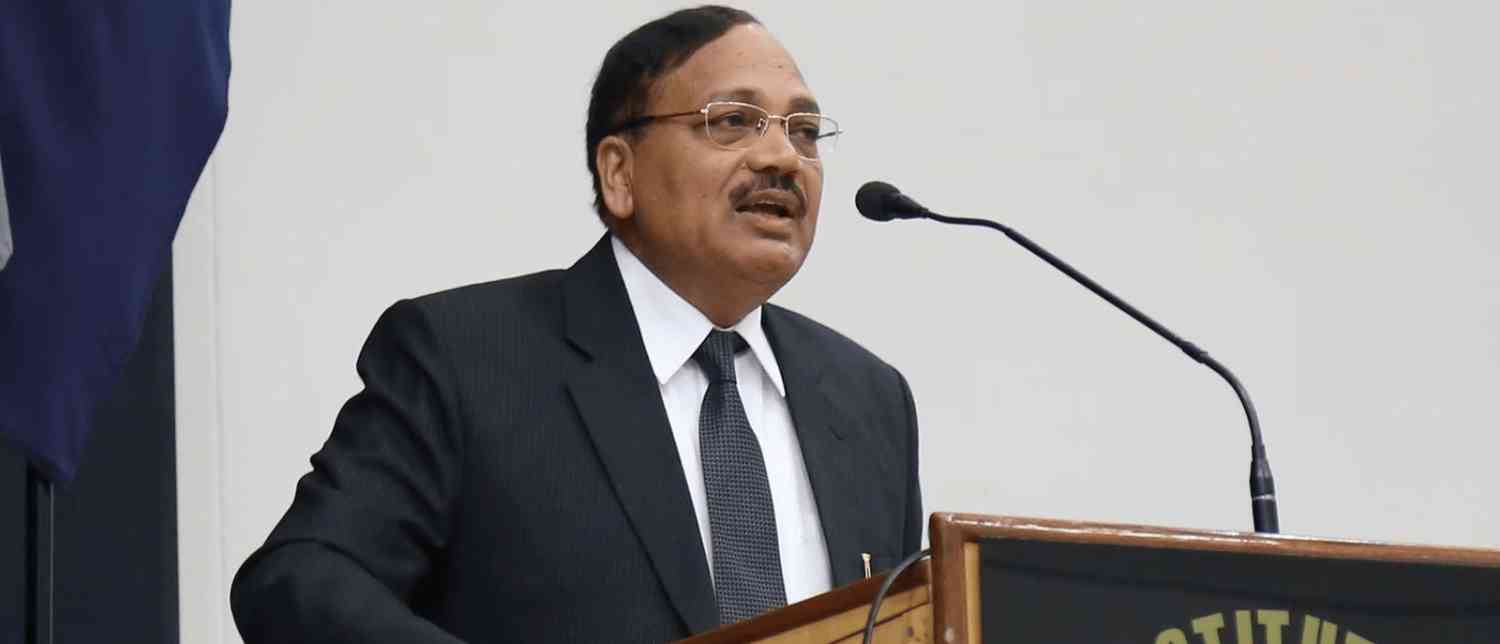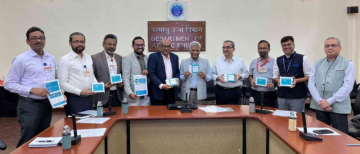On a crisp morning at Rashtrapati Bhawan on November 24, 2025, Justice Surya Kant took oath as the 53rd Chief Justice of India—an event that not only marked a transition in the highest judicial office but also set the stage for a deeply significant chapter in the evolution of India’s legal system. Administered the oath by President Droupadi Murmu, Justice Kant assumed office just days after serving as a member of the 16th Presidential Reference Bench, where he advised the President that neither she nor the State Governors were bound by timelines “imposed” by the Supreme Court in its April 8 ruling on the Tamil Nadu Governor case. His oath, taken in Hindi, added a touch of symbolic resonance, reflecting an emphasis on Indianness that both he and his predecessor had recently been praised for.
Justice Kant’s elevation to the top judicial post comes at a time when the country’s judiciary faces unprecedented pressure—from mounting pendency and procedural complexity to rising expectations of transparency and accountability. Over the next 15 months, until his retirement on February 2, 2027, his leadership will shape how India's judiciary navigates institutional challenges, digitisation, legal education reforms, and crucial constitutional debates.

A Ceremony Marked by Grace, Continuity, and Camaraderie
The oath ceremony was followed by a rare gesture of warmth and respect: outgoing Chief Justice B.R. Gavai ensured that the official car designated for the Chief Justice of India was reserved for Justice Kant, enabling him to travel to the Supreme Court for the first time as CJI in the official vehicle itself. It was a small but symbolic act of camaraderie—an acknowledgment of continuity and mutual respect that the judiciary often embodies in moments of transition.
Only days earlier, Solicitor General Tushar Mehta had lauded both Justice Gavai and Justice Kant for infusing “Indianness” into judicial reasoning. He praised their consistent reliance on Indian legal traditions and jurisprudence instead of foreign precedents. The two were, fittingly, also appointed together to the Supreme Court on May 24, 2019. With Justice Kant now stepping into the role of CJI, that shared legacy seems poised for a renewed impetus.
A Judicial Philosophy Rooted in Dialogue, Mediation, and Balance
Justice Surya Kant has long been regarded as a judge who prefers dialogue over confrontation. His judicial approach tends to nudge opposing sides toward resolution rather than allowing matters to escalate into all-or-nothing battles. The most illustrative instance of this was during the farmers’ agitation, when the protest had reached a critical and volatile stage. From the Bench, Justice Kant steered both the farmers’ groups and the Union government toward negotiation, calming what threatened to become a prolonged and destabilising standoff.
As CJI, he now inherits responsibility over several contentious and transformative matters. One of them is the Special Intensive Revision (SIR) case—an exercise that has already expanded from Bihar to a second phase covering 12 states and Union Territories and approximately 51 crore people. While his Bench has already intervened to make the procedure more transparent and accessible, it has not yet addressed the fundamental constitutional question: is the SIR exercise valid at all? This unresolved issue places Justice Kant in a pivotal position, and his handling of it will be closely scrutinised.

Drawing the Line Between Free Speech, Humour, and Perversity
Justice Kant has also demonstrated clarity on issues relating to speech, expression, and the evolving digital culture. During hearings on a plea filed by YouTuber Ranveer Allahbadia—who sought protection from arrest after controversial comments on parents and sex on the show India Got Latent—Justice Kant articulated a sharp distinction between humour and vulgarity.
“Humour is an art,” he observed, noting that true humour is something the entire family can enjoy without embarrassment. “Using filthy language is not talent.” He referred to Bollywood’s great comedians and writers to reinforce the point that humour can flourish without profanity.
In another matter involving academician Ali Khan Mahmudabad, Justice Kant constituted a committee of senior IPS officers to carefully examine his contentious posts on Operation Sindoor, demonstrating his insistence on nuance, fairness, and context in sensitive cases involving speech.
Part of Landmark Constitutional Decisions
Throughout his career, Justice Surya Kant has been part of several seminal judgments that have shaped India's constitutional and political landscape. His contributions extend across issues ranging from federalism to civil liberties, transparency to national security.
Key cases where Justice Kant played a crucial role:
-
Abrogation of Article 370 — Justice Kant was part of the Bench that upheld the removal of Jammu and Kashmir’s special status, one of the most consequential constitutional decisions of recent decades.
-
Electoral Bonds Scheme — He was part of the Bench that declared the scheme unconstitutional, a ruling that reshaped political funding transparency.
-
Pegasus spyware case — Justice Kant sat on the Bench that scrutinised the allegations of state surveillance through the Pegasus spyware.
-
Suspension of sedition law — He was part of deliberations on the continued relevance and misuse of Section 124A, a colonial-era provision.
-
Lakhimpur Kheri killings case — A Bench led by him granted interim bail to Ashish Mishra, son of a former Union Minister, imposing stringent conditions despite the Allahabad High Court’s earlier denial of relief.
These cases highlight his judicial consistency, willingness to engage with complex constitutional questions, and insistence on balancing state power with citizens’ rights.

Tackling India’s Massive Pendency Crisis
Justice Kant has repeatedly emphasised that the judiciary’s credibility is threatened when justice is delayed. With more than 90,000 cases pending in the Supreme Court, his principal priority is to bring this number down to a manageable level.
Across all levels of the judiciary, India faces a staggering backlog:
-47.56 million cases pending in district and taluka courts
-6.38 million in high courts
-88,000 in the Supreme Court
This adds up to an overwhelming 153 million cases, as of September 2025.
Justice Kant has bluntly stated that even the strongest legal aid systems “lose their meaning when justice arrives too late.” His approach includes leveraging technology, discouraging repetitive “miscellaneous applications” filed by influential litigants, and ensuring the Supreme Court is not the first forum resorted to for every dispute.
The CJI’s New Responsibilities: Sensitive Cases Ahead
A Bench led by Justice Kant recently noted that the issue of a “most revered member of the judiciary” allegedly approaching an NCLAT member—Justice (retired) Sharad Kumar Sharma—for a favourable order must be examined by the Chief Justice of India. Now that he has assumed office, this responsibility falls squarely on him.
Similarly, whether he will take forward the proceedings regarding allegations of hate speech against a sitting High Court judge, Justice Shekhar Yadav, remains to be seen. Outgoing CJI Gavai stated, “We tried our best.” The baton now passes to Justice Kant.
Another pressing question concerns diversity: will the Kant-led Collegium finally deliver the long-awaited breakthrough in appointing more women judges to the Supreme Court?
A Career Rooted in Excellence and Service
Born on February 10, 1962, in Hisar, Haryana, Justice Surya Kant’s rise through the legal system has been exemplary. At just 38, he became the youngest Advocate General of Haryana on July 7, 2000. By January 9, 2004, he was elevated to the Punjab and Haryana High Court. In October 2018, he became Chief Justice of the Himachal Pradesh High Court before ascending to the Supreme Court the following year.
Four decades of experience give him a rare vantage point as he begins shaping the future contours of India’s legal architecture.
A New Blueprint: Building Better Lawyers and Judges for India
As Justice Surya Kant steps into the role of the 53rd Chief Justice of India, he carries with him not just decades of legal expertise but a compelling promise: the possibility of transforming the country’s judicial and legal education systems at a foundational level. His four-decade journey through the legal landscape—marked by integrity, depth, and a keen understanding of India’s justice delivery challenges—positions him uniquely to drive a new chapter of reforms for both the Bar and the Bench.
With India’s judiciary facing mounting caseloads, widening regional disparities, and a rapidly evolving technological environment, the significance of Justice Kant’s tenure stretches far beyond ceremonial leadership. It opens a rare window to build better lawyers, better judges, and a more robust justice ecosystem. This critical moment calls for reforms that engage not just the judiciary, but also the Bar Council of India—the nation’s regulatory authority under the Advocates Act, 1961.
Among the many areas demanding innovation and structural change, five stand out as the most urgent and transformative. These reforms, if championed under Justice Kant’s leadership, could reshape India’s legal profession for generations.
-
Democratising Judicial Clerkships: Bringing Talent to District Courts
One of the most powerful reforms Justice Surya Kant can advance is the democratisation and expansion of judicial clerkships to include India’s district and subordinate courts. While judicial clerkships with High Court and Supreme Court judges are highly coveted, the vast universe of the Indian judiciary remains untouched by the clerkship model.
This gap is striking, given that district courts handle an overwhelming 85% of India’s total caseload. Despite being the backbone of the justice system, these courts often remain outside the aspirations of young law graduates. As a result, thousands of motivated law students miss out on witnessing the realities of litigation where it unfolds most viscerally—during trials.
A nationwide district-court clerkship programme would give students a front-row seat to trial processes, evidence evaluation, case management practices, and everyday judicial reasoning. More importantly, it would expose them to the structural challenges that plague India’s justice delivery system: pendency, adjournments, poor investigation standards, ineffective cross-examination, and procedural bottlenecks.
Such a reform would cultivate a generation of lawyers with a strong foundation in trial advocacy—an area where India urgently needs more specialised skill and professional discipline.
-
Strengthening NALSA’s Collaboration with Law Schools
India’s National Legal Services Authority (NALSA) plays a pivotal role in ensuring access to justice for economically and socially vulnerable groups. It offers free legal aid, organises Lok Adalats, and promotes alternative dispute resolution. However, a strategic partnership between NALSA and the country’s law schools could dramatically expand its impact.
A structured collaboration between NALSA and law school legal aid clinics could become a training pipeline for young lawyers committed to public interest lawyering. Such a model would help students build essential litigation skills:
– trial advocacy,
– evidence handling,
– cross-examination,
– drafting and pleadings, and
– statutory interpretation.
Through real-world exposure, law students would gain the competencies needed to represent underserved communities and navigate complex legal issues with empathy and competence. This would serve the dual purpose of strengthening NALSA’s mission while nurturing a generation of lawyers deeply invested in justice for all.
-
Expanding Skill-Based Training for Trial Advocacy and Appellate Practice
India is home to more than 1,700 law schools, but the quality of training varies immensely across institutions. This disparity leaves many graduates without the practical skills necessary for effective trial or appellate practice. Justice Surya Kant’s leadership offers an opportunity to shift legal education from being largely theoretical to genuinely practice-oriented.
A renewed emphasis on trial advocacy—through training modules on evidence, cross-examination, and courtroom strategy—could significantly elevate the bar’s quality. The judiciary, in partnership with the Bar Council of India and State Bar Councils, could introduce national and state-level advocacy fellowships to support students and practising lawyers alike.
Moreover, the creation of litigation labs within law schools—similar to the Supreme Court Litigation Clinic at Harvard Law School—could transform experiential learning. If the Supreme Court and High Courts collaborate with leading law faculties, India could build a holistic and highly specialised training ecosystem at scale.
-
Promoting Access to Justice & Strengthening Public Service Pathways
For India’s legal system to truly serve its people, the orientation of the profession must shift from corporate ambition to public service. Justice Surya Kant’s leadership could usher in a new era wherein lawyers are encouraged—and structurally supported—to serve where they are needed most.
A transformative step in this direction would be the creation of a National Public Defender Service, offering quality representation to those who cannot afford private lawyers. Supported by a judicially endorsed pro bono framework, this initiative could significantly improve access to justice.
Equally pressing is the need to address India’s urban-rural imbalance in legal practice. With over 70% of lawyers practising in metropolitan regions, rural India is turning into a justice desert. A system of fellowships enabling young lawyers to practise in district courts could help bridge this gap, strengthen grassroots justice mechanisms, and reinforce the rule of law where it is most fragile.
-
Harnessing Technology for an AI-Driven Legal Future
India’s judiciary has been at the forefront of digital transformation, pushing innovations such as virtual hearings, AI-powered transcription, e-filing, and AI-assisted due diligence. The e-courts project—spanning more than 21,000 courts—is among the world’s largest judicial digitisation initiatives.
Under Justice Surya Kant, this momentum can evolve into a more sophisticated, lawyer-centric technological ecosystem. Establishing AI research labs within the Supreme Court and High Courts could equip judicial clerks and advocates for the future of law.
There is also an urgent need for national certification programmes and accredited training in:
– e-discovery,
– digital forensics,
– online dispute resolution, and
– AI-enabled legal research.
Preparing lawyers for an AI-driven legal world is not optional anymore; it is a national imperative.
A Five-Point Action Plan for the New CJI: An Open Letter
As Justice Surya Kant begins his tenure, he does so at a time when democratic institutions worldwide face unprecedented challenges. India’s judiciary remains resilient, but public expectations have never been higher.
The framers of the Constitution entrusted the Supreme Court with remarkable powers under Article 142, enabling it to deliver “complete justice” beyond statutory limitations. With such constitutional weight comes profound responsibility.
To strengthen India’s judicial future, five urgent priorities await the new Chief Justice.
-
Filling Vacancies Across the Supreme Court and High Courts
Justice Surya Kant’s 15-month tenure will see him leading appointments for six new Supreme Court judges, while over 300 High Court positions remain vacant. These appointments will shape the judiciary for decades.
The challenge lies in balancing judicial independence with the responsibility of appointing individuals of proven integrity and competence. This moment also offers an opportunity to improve diversity on the Bench, especially through the inclusion of more women judges.
-
Tackling Case Pendency: India's Most Pressing Judicial Crisis
The scale of pendency is staggering:
-47.56 million cases pending in district and taluka courts
-6.38 million cases pending in High Courts
-88,000 cases pending before the Supreme Court
In total, India carries a judicial burden of 153 million cases.
Justice Kant has warned that even the strongest legal aid framework “loses its meaning when justice arrives too late.” A multi-layered plan—covering vacancies, adjournment policies, training, appeals processes, and government litigation (which accounts for 50% of all pending cases)—is essential to restore confidence in timely justice.
-
Establishing a National Academy for Lawyers
With 1.8 million lawyers in India and nearly one lakh new entrants annually, the country urgently needs a national-level institution dedicated entirely to training lawyers. While judicial academies support judges, no equivalent exists for advocates.
A national academy could bridge this gap through structured training, capacity building, and continuous professional development—particularly for independent practitioners who lack institutional support.
-
Deepening Judicial Reforms Through Mediation
Justice Surya Kant has long championed mediation, a dispute-resolution method that emphasises healing over confrontation. With the Mediation Act, 2023 now offering a legal framework, building consensus within the Bar is essential.
As he has said, mediators “choose understanding over victory, conversation over conquest, healing over harm.” For mediation to flourish, the legal community must embrace it fully.
-
Safeguarding the Rule of Law While Preserving Judicial Independence
The judiciary has historically protected citizens’ rights, but its failure during the Emergency—most notably in the ADM Jabalpur (habeas corpus) case—remains a cautionary tale. Eternal institutional vigilance is essential to uphold freedoms and guard against executive excesses.
Justice Surya Kant’s impeccable record, integrity, and empathetic approach make him well-suited to strengthen the judiciary’s role as a guardian of constitutional principles.
A Tenure That Will Be Watched Closely
Building better lawyers, better judges, and a more responsive justice system is no longer just an administrative goal—it is a national necessity. Much groundwork has already been laid over the past decade, and Chief Justice Surya Kant enters office at a pivotal moment.
His leadership has the potential to reshape legal education, expand access to justice, enhance judicial capacity, and prepare India’s legal system for an AI-driven future. His tenure will not only influence the judiciary’s direction but also determine the quality and character of justice available to millions of Indians.
In the months ahead, the nation will watch closely—and with hope.
*Views expressed in the above piece are personal and solely those of the author. They do not necessarily reflect Vygr’s views.
With inputs from agencies
Image Source: Multiple agencies
© Copyright 2025. All Rights Reserved. Powered by Vygr Media.

























